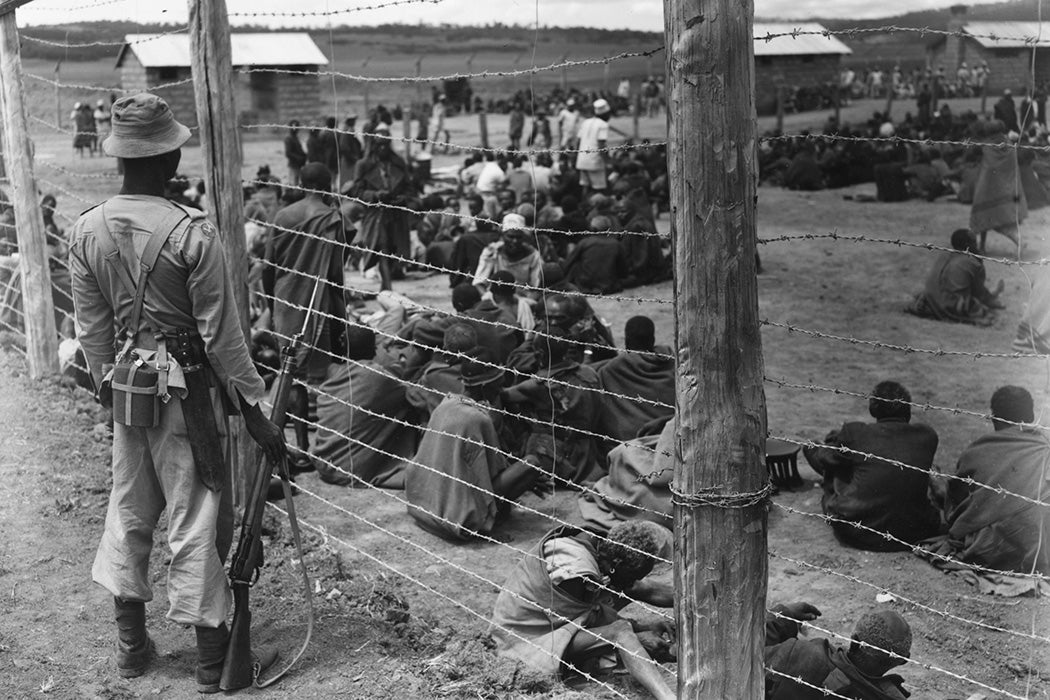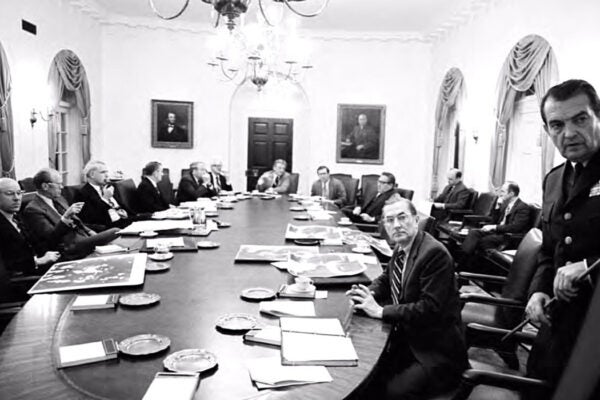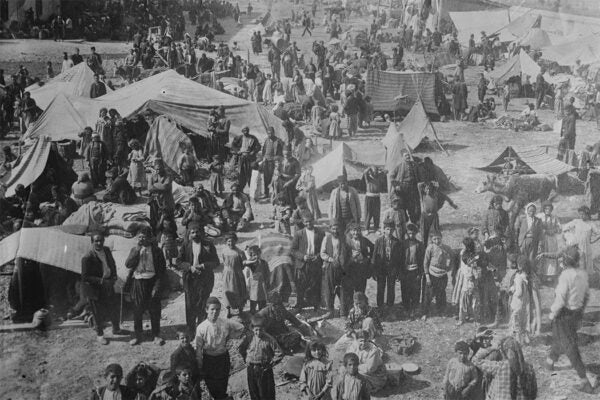Anti-colonial protestors in British colonies were met with torture, execution, massacre, and forced labor camps, but mainstream news consumers in metropolitan Britain were typically kept in the dark about these things. “Secrecy and censorship were always pillars of imperial power,” writes historian Erik Linstrum in his exploration of reportage on colonial violence in post-World War II Britain. Reporters always knew more than they told.
“Newspaper stories and radio broadcasts made allegations of violence visible while subjecting them to exacting standards of verifiability,” Linstrum writes. “They translated traumatic experiences and moral outrages into empirical claims. Even as they disclosed the possibility that it might be happening, journalists made colonial violence increasingly unknowable.”
It was “the denial of colonial violence among British observers” during the post-war “age of emergency” that helped foster “the brutal and sometimes indiscriminate use of force, including torture, collective punishment and coercive labor, across the British Empire.” The reality of fighting anti-colonialist nationalist movements was often little more than rumor in Britain, diluted by “uncertainty and doubt,” Linstrum writes, or ghettoized among leftists, minor religious groups, and the like.
The only paper to publish a photo of British troops in Malaya (1948–1960) decapitating corpses, for instance, was the Daily Worker. Meanwhile, the portrayal of colonial brutality in novels, plays, and movies could be muted precisely because it was fiction. For more avant-garde work, Linstrum notes there was an “inverse relationship between the clarity with which violence was represented and the size of the audience.”
Official Secret Acts were highly effective. As was the wholesale destruction of records as the British retreated in the face of independence movements. Those records that did survive these intentional purges were essentially buried—it was only in 2011 that an intelligence archive documenting “torture in Emergency-era Kenya [1952–1960] along with sensitive records from many other colonies” was revealed to the public because of a lawsuit.
During the period after the Emergency, word nonetheless seeped out, especially from the military, where “frank acknowledgement of extreme violence” could be seen in regimental magazines (“casual references to human trophies in Kenya”) and photo albums compiled by soldiers in Malaya, which “interspersed images of insurgents’ severed heads with festive snaps of campfires and holidays.” Disaffected and/or traumatized veterans could tell their parents and friends back in Britain, but word-of-mouth had only limited political reach.
Linstrum examines how reporters were beholden to the strictures of their professional ethics, editorial policy, fealty to sources, and fear of alienating the government/military. For instance, reporters grew to dislike the white settler-colonialists in Kenya, but their profession demanded that they keep their opinions to themselves. They heard about atrocities but demanded more than one source, typically impossible to get when one of those sources was the one committing the atrocity in the first place.
Imperial officials were “adept at keeping embarrassing and controversial information from public view.” They “discouraged critical journalism by wielding legal powers of suppression and manipulating press outlets with promises of access, advertising revenue, and personal relationships.”
Weekly Newsletter
The “Emergency” terminology helped. During the postwar period it was used to sidestep the legal and financial implications of states of war, to delegitimize anti-colonialist struggles, and to stave off interference by other countries. The euphemism was effective on the home-front, too, since millions of Britons only sporadically paid attention to events in far-flung corners of the world.
People were paying attention elsewhere, however: between 1947 and 1984, more than four dozen countries gained their independence from Britain.
Linstrum’s book-length treatment on the impact of decolonization on Britain itself details more fully how state propaganda and secrecy struggled to contain the reality of the terror that was the foundation of imperialism.
Support JSTOR Daily! Join our membership program on Patreon today.







